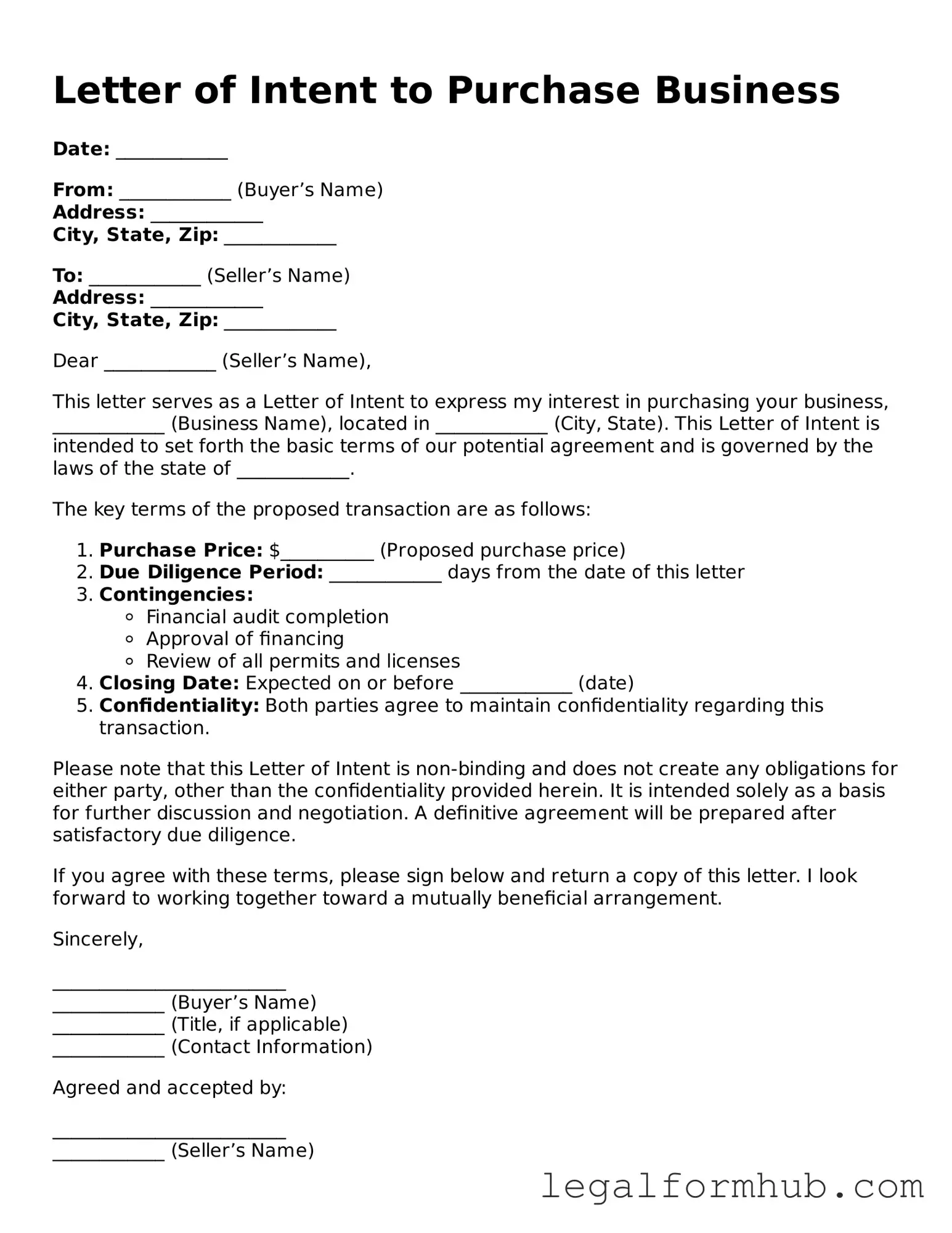A Memorandum of Understanding (MOU) is often used in business transactions to outline the intentions of the parties involved. Similar to a Letter of Intent, an MOU establishes a framework for negotiations and clarifies the key terms of a potential agreement. While an MOU may not be legally binding, it serves as a useful tool for ensuring that all parties are on the same page before moving forward. This document often includes details about the scope of the project, responsibilities, and timelines, making it a valuable precursor to more formal agreements.
An Offer to Purchase is another document closely related to a Letter of Intent. This offer is typically more formal and is presented by a buyer to a seller, outlining the terms under which the buyer is willing to purchase a business. It includes specifics such as the purchase price, payment terms, and any contingencies that must be met. Unlike a Letter of Intent, which is more exploratory, an Offer to Purchase indicates a serious intent to buy and can lead directly to a binding contract if accepted.
A Term Sheet serves a similar purpose by summarizing the main points of a proposed agreement. It outlines the key terms and conditions that both parties agree to discuss further. While it is not a legally binding document, a Term Sheet provides clarity and direction for negotiations, much like a Letter of Intent. It often includes details about pricing, timelines, and any necessary conditions that must be met before finalizing the deal.
A Non-Disclosure Agreement (NDA) can also be compared to a Letter of Intent, especially when confidentiality is crucial in the negotiation process. An NDA protects sensitive information shared between parties during discussions. While the Letter of Intent expresses intent to engage in a transaction, the NDA ensures that proprietary information remains confidential. This allows both parties to freely share information without fear of it being disclosed to outside parties.
A Purchase Agreement is a more formal and comprehensive document that follows a Letter of Intent. It serves as the final contract that outlines the terms and conditions of the sale. This document includes all details necessary for the transaction, such as price, payment methods, and the obligations of both parties. While a Letter of Intent expresses preliminary interest, the Purchase Agreement solidifies the deal and is legally binding.
A Business Plan may also share similarities with a Letter of Intent, particularly in how it outlines the vision and strategy for a business transaction. While a Letter of Intent focuses on the intent to purchase, a Business Plan provides a detailed roadmap for how the business will operate post-acquisition. It includes market analysis, financial projections, and operational plans, making it a crucial document for both buyers and sellers to consider during negotiations.
Parents considering homeschooling in California may find it essential to familiarize themselves with the necessary documentation, including the California Homeschool Letter of Intent form, which can be found at OnlineLawDocs.com. This form is integral in notifying the school district of a child's homeschooling status, ensuring compliance with state educational requirements.
Finally, a Due Diligence Checklist is an important document that often follows a Letter of Intent. It outlines the information and documentation required to evaluate the business being purchased. This checklist helps buyers ensure they have all necessary data to make an informed decision. While a Letter of Intent indicates a willingness to proceed, the Due Diligence Checklist serves as a practical tool to assess the viability of the transaction before finalizing any agreements.
